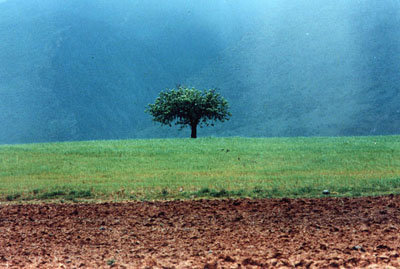Abbas Kiarostami
dal 6/11/2006 al 8/12/2006
Segnalato da
6/11/2006
Abbas Kiarostami
Akbank Art Center, Istanbul
Consisting of photographs and film frames shot by him in Iran, the exhibition is called Snowscapes and Roadscapes: two separate series in which a work in film accompanies the artist’s photographs in the exhibition space.

Snowscapes and roadscapes
Focusing on the works of contemporary artists since 2003, the Akbank Art Gallery is
presenting viewers in Istanbul with an exhibition by Abbas Kiarostami, an Iranian
filmmaker and graduate of the fine arts academy whose command of the cinematic and
plastic arts has become increasingly more apparent in recent years as he
simultaneously pursues these sibling disciplines.
Consisting of photographs and film
frames shot by him in Iran, Kiarostami’s exhibition is called Snowscapes and
Roadscapes. The show reveals the visual experimentation of an artist dealing with
repetitiveness and with differences arising from similarities and in much the same
way, Snowscapes and Roadscapes consists of two separate series in which a work in
film accompanies the artist’s photographs in the exhibition space.
In his imagery,
Abbas Kiarostami is one of the founders of the Iranian New Wave Cinema. Taking his
own native experience as his point of departure in his work, in this exhibition the
filmmaker
and artist develops the imprint of a pragma of writing and reading on a dialectic
that is infinitely different and infinitely identical.
The photographs make us
think about how different yet how similar are each and every photographic and
cinematographic image that is read as being reproducible and yet at the same time
they also show how each repetition is capable of taking us in the direction of
quite different thoughts. The transitiveness from each image to any other one
simultaneously presents a relationship and a transfer as the likeness of the
transfer of a heritage.
These sequentially arriving images, which we might call a
sort of natural transfer, return to us as reproducible images. Although each one of
them is in our memory, not one of them is recreated in our minds.
Along with these images, which remind us that the pragma of each one’s reproduction
is in one respect actually rooted in how different it is and that similarly in a
sense its aura is recreated on each and every occasion, our minds are also turned
again to the difference between Adorno’s and Benjamin’s views of the aura and it
does not escape us that, compared with Adorno, Benjamin is much closer to us and to
Kiarostami’s photographs.
These photographs also show us that in the same sense,
each reconfiguration is based upon an experience as a reconfiguration of the world
and of nature and that each experience is also unique in time and incorporates a
time-bound singularity. As Kiarostami always emphasizes, cinematic images come from
photographs and photographs must always return to fixed symbols (myths, dreams,
sentiments, narratives, etc) that we may conceive of as a process of trial and error
that relies on the relationship between viewed and viewer as an element of viewing.
This provides the test bench on which the process of trial and error is worked out.
This is also the reason why cinema is everywhere and why it is possible to make a
film about anything. In the same sense therefore, art is always contingent upon some
reflection-be it verbal or visual.
Each reflection may be anywhere and about any
thing and for that reason each and every one of these snowscapes and roadscapes may
be seen as an individual instance of trial and error. However much they may seem to
be a narration or an illusion, through Kiarostami’s vision, each framed image leads
us towards a reality, which seems to be nothing more than merely a reflection of a
view.
Abbas Kiarostami will be coming to Istanbul during the exhibition and giving a
lecture on the subjects of photography and filmmaking.
Opening: Tue, 7 Nov 2006 at 19:00.
Akbank Art Gallery
Istiklal Caddesi No: 14-18 - Istanbul



